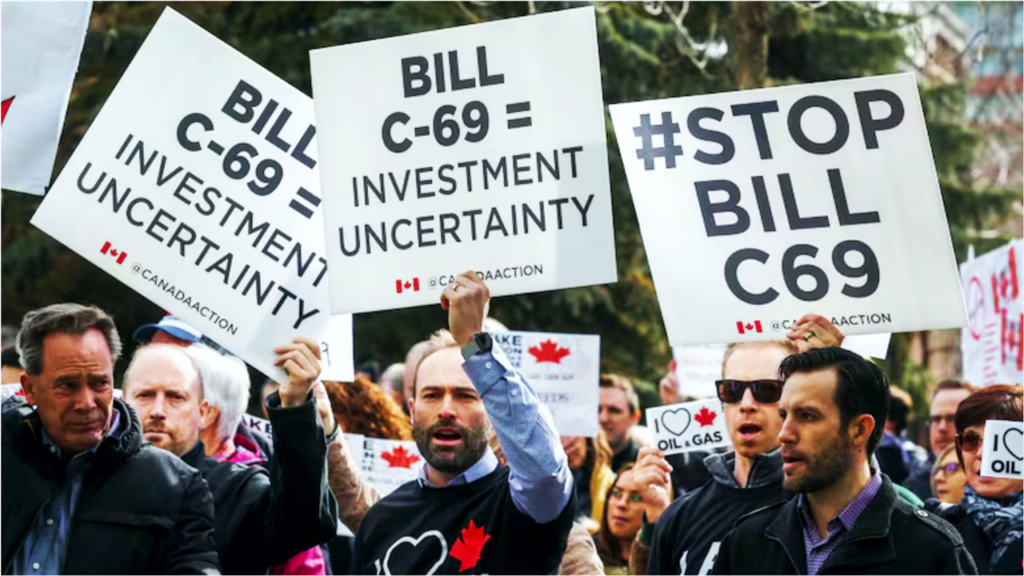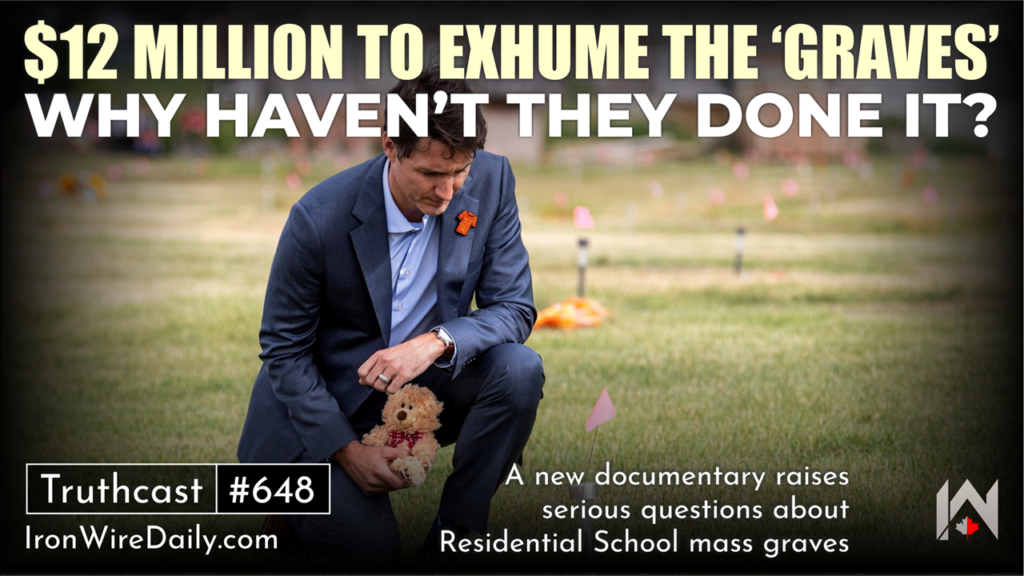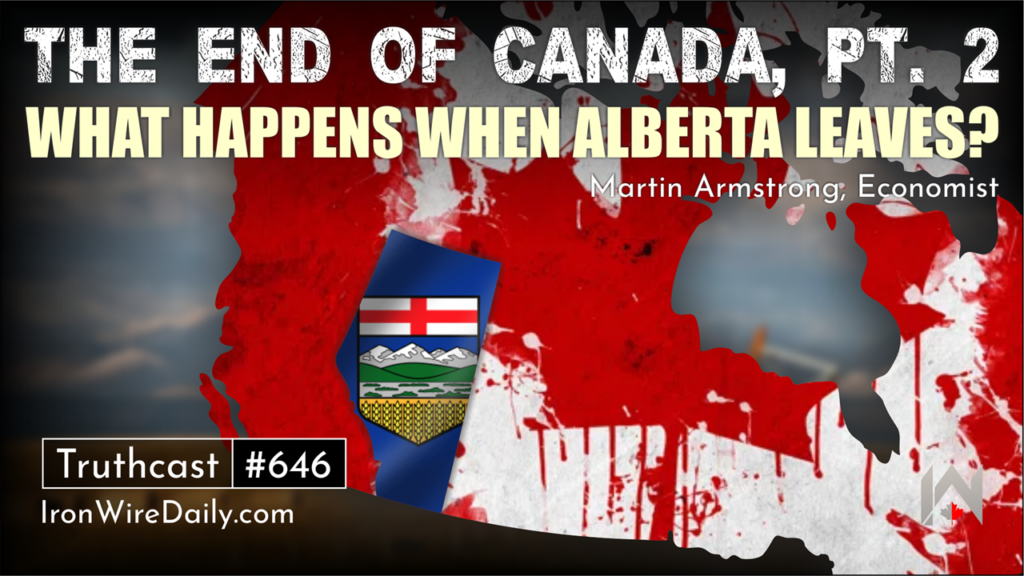Futures Surge As Dip-Buyers Ignore Escalating Middle-East War

US equity futures are higher, oil is lower and multiple asset classes are displaying a risk on tone as markets shrug off the situation in the Middle East, potentially as Iranian oil exports have not been targeted. As of 8:00am, S&P futures are up 0.6% S&P 500 contracts up, rising some 70 points overnight to 6070 signaling a full rebound from Friday’s drop, with dip buyers coming back as the conflict between Israel and Iran remained contained over the weekend. Nasdaq 100 and Russell futures also rise 0.7% and 1.0% respectively, pointing to a recovery after cash equities fell on Friday. European and Asian stocks also advanced. Crude oil reverses early gains, with Brent now down 0.7% after spiking as much as 5.5% overnight following as attacks between Israel and Iran extended into a fourth day. Haven assets also retreat, with spot gold is down $15 to around $3,417/oz, and the Swiss franc and yen underperforming G-10 peers. Gold slipped 0.3% from an all-time high. Treasuries retreated on concerns that persistently higher energy prices could stoke inflation, with the 10-year yield rising five basis points to 4.45%. Trump said in an interview with ABC News on Sunday that it was “possible” the US could get involved in the conflict, though the US is “not at this moment involved”; he also said he hoped Iran/Israel can find an agreement but sometimes you have to “fight it out.” Attention for this week is the G7 Summit (today/tomorrow – watch for commentary on bil-lateral trade deals), BoJ tomorrow, FOMC on Wednesday. and BoE on Thursday. Elsewhere, data from China was mixed with Retail Sales stronger while Industrial Production/Fixed Urban Assets worse. Reminder US mkts are closed Thursday for Juneteenth holiday.
In premarket trading, Mag 7 stocks are all higher (Tesla +1.7%, Meta +0.7%, Nvidia +0.7%, Apple +0.4%, Amazon +0.4%, Alphabet +0.5%, Microsoft +0.1%). Here are some other notable premarket movers:
- Archer Aviation rises 4% as the electric aircraft maker expects its defense-related sales to outstrip commercial air taxis in the short term.
- Incyte gains 7% after the drugmaker gave clinical data from two trials of its experimental therapy to treat a blood disorder that impressed Wall Street.
- Roku climbs 9% after the company and Amazon.com Inc.’s Amazon Ads announced a partnership, saying that advertisers will now have access to more than 80% of US households with connected TV though the Amazon DSP marketing tool.
- US Steel rises as much as 5% in early trading. President Donald Trump approved Nippon Steel’s $14.1 billion purchase of the company after giving significant concessions to the US government, including a “golden share” that allows Washington a say in major decisions.
- EchoStar soars 49% after Trump urged the company and the chairman of the Federal Communications Commission to resolve a dispute over the company’s valuable spectrum licenses.
- Sage Therapeutics rises 33% after the company agreed to be acquired by Supernus in a deal worth up to $12 per share.
- Sarepta tumbles 41% as Piper Sandler and BMO downgraded the drugmaker on news that a second patient had died after being treated with its gene therapy for a rare muscle disorder.
- Smurfit WestRock gains 4.1% after a Jefferies analyst raised the recommendation to buy, citing upside from commercial initiatives and confidence in leadership.
- Victoria’s Secret rises 3% as the company is being targeted by another activist investor seeking a shake-up of the business, according to a person familiar with the matter.
- WeRide US-listed shares gain 4% after the company says it signed a cooperation agreement with Uber Technologies and Dubai’s Roads and Transport Authority to launch pilot operation of autonomous vehicles in the emirate.
The outbreak of hostilities between Israel and Iran on Friday disrupted the momentum that had driven the S&P 500 back near record levels and reversed April’s tariff-fueled losses. While markets initially adopted a cautious, risk-off stance to assess how the conflict might unfold, sentiment improved on Monday as investors grew more confident that the attacks were unlikely to draw in more parties.
“The situation in the Middle East is not making the market shake, and it’s likely it will stay that way as long as there is no major escalation,” said Enguerrand Artaz, a fund manager at La Financière de l’Echiquier. “Markets are riding strong momentum. The mood overall is still very much about buying the dip.”
“The market currently anticipates a limited conflict, though there is little indication that hostilities will end quickly,” said Jochen Stanzl, chief market analyst at CMC Markets. “It is expected that fighting will continue unabated this week, albeit on a limited scale.”
Some strategists were more circumspect and cautioned that the S&P 500 remained vulnerable, especially as valuations looked stretched. The broader the Middle East conflict becomes and the longer it lasts, the more negative it will be for US stocks, said RBC’s Lori Calvasina. In a worst-case scenario, they see the S&P 500 returning to its April lows if the attacks drive up energy prices. And in a less severe case, the index may fall about 13%, the strategists said.
Federal Reserve Chair Jerome Powell will likely highlight increased uncertainty when policymakers meet this week about interest rates this week, noted Mohit Kumar, chief European strategist at Jefferies International.
“The tone would likely be that there is no hurry to cut rates, but the Fed will be ready to respond if economic conditions so warrant,” Kumar said.
Europe’s Stoxx 600 is up 0.2% as investors wager that the Israel-Iran conflict would not have a widespread economic fallout beyond the Middle East. Advances for banks, oil companies and luxury goods stocks offset declines for pharmaceuticals and consumer goods. Among single stocks, Kering rallies on news the luxury-goods company will appoint the chief executive officer of Renault as its next CEO. Here are the most notable European movers:
- Kering shares jump as much as 11% on news the luxury-goods maker would name Renault’s Luca de Meo as its next chief executive officer, a move that’s seen as positive given de Meo’s experience in engineering corporate turnarounds.
- Metro Bank shares jump as much as 14%, briefly hitting their highest level in over two years, after being approached about a potential takeover offer led by private equity group Pollen Street Capital, according to Sky News on Saturday.
- Entain shares climb as much as 8.7% to the highest since December after the gambling firm’s US joint venture BetMGM upped its net revenue and Ebitda guidance for fiscal year 2025.
- Costain shares gain as much as 9.2%, with the shares reaching highest since March 2020, after the infrastructure company announced a buyback along with its first-half trading update.
- Umicore shares rise as much as 6.5% as Jefferies upgrades the Belgian stock, saying it continues to favor consumer ingredients within its European chemicals coverage, but sees a challenged outlook for diversified names.
- Novo Nordisk shares slip as much as 1.4% as JPMorgan lowers its price target to factor in the European pharmaceuticals sector’s derating along with a reduction in the broker’s 2026 EPS estimate.
- Renault shares fall as much as 8% — the most in eleven months — on news the French carmaker’s CEO Luca de Meo will resign and run the luxury-goods maker instead.
- Banca Generali shares drop as much as 3% in Milan trading after Mediobanca postponed a key investor meeting to endorse its plan to take over Assicurazioni Generali SpA’s wealth management arm.
- Swissquote shares fall as much as 5.5% and get halted on volatility after UBS cuts recommendation to sell from neutral, citing near-term earnings risk and longer-term valuation shift.
- Energean shares fall as much as 5.8% after being downgraded by Berenberg as the conflict between Israel and Iran has led to increased geopolitical risk for the oil and gas firm.
Asian stocks advanced, helped by gains in technology firms, overcoming initial caution over hostilities between Israel and Iran. The MSCI Asia Pacific Index gained as much as 0.8% to head for its first advance in three sessions, settling after Friday’s drop as Israel launched surprise attacks on Iran. SK Hynix and Advantest were among the biggest boosts to the gauge’s climb. Benchmarks rose in South Korea, Japan and India. Chinese stocks were little changed as investors try to gauge the health of Asia’s largest economy. While May retail sales data came in stronger-than-expected, new-home prices fell by the most in seven months.
In FX, the Bloomberg Dollar Spot Index down by 0.1%, reversing a rally in the early hours. The Israeli shekel is the best-performing currency globally, clawing back some of the losses it saw last week versus the greenback.
In rates, treasuries are cheaper across the curve, lagging bunds and gilts as stock futures advance amid optimism that the hostilities between Israel and Iran will remain contained. Planned auction of 20-year bonds during US afternoon, two days earlier in the week than normal because of Wednesday’s Fed rate decision and Thursday’s holiday, also weighs. Treasury yields are 1.5bp-2bp cheaper across maturities with curve spreads steeper but still within 1bp of Friday’s closing levels. 10-year near 4.45% is ~5bps cheaper on the day with bunds and gilts outperforming by 2bp and 3bp in the sector. $13 billion 20-year bond reopening at 1pm New York time has WI yield around 4.945%, about 10bp richer than last month’s new-issue result; a $23 billion 5-year TIPS reopening Tuesday is this week’s only other coupon auction
In commodities, oil gave up another sharp gain on Monday as ongoing attacks have so far spared key export infrastructure. There’s also been no blockage of the vital Strait of Hormuz, the narrow waterway that handles roughly a fifth of the world’s daily crude shipments. Brent was down 0.7% after spiking as much as 5.5% overnight following as attacks between Israel and Iran extended into a fourth day. Haven assets also retreat, with spot gold is down $15 to around $3,417/oz, and the Swiss franc and yen underperforming G-10 peers.
Bitcoin edges higher and trades just shy of USD 107k; Ethereum also benefits from the risk tone and climbs past USD 2.6k.
Looking at today’s calendar, US economic data slate includes June Empire manufacturing at 8:30am. Ahead this week are retail sales, industrial production, and S&P Global US PMIs
Market Snapshot
- S&P 500 mini +0.6%
- Nasdaq 100 mini +0.7%
- Russell 2000 mini +1.0%
- Stoxx Europe 600 +0.2%
- DAX +0.2%
- CAC 40 +0.7%
- 10-year Treasury yield +3 basis points at 4.43%
- VIX -0.7 points at 20.12
- Bloomberg Dollar Index -0.1% at 1200.79
- euro +0.3% at $1.1579
- WTI crude -0.7% at $72.46/barrel
Top Overnight News
- Hostilities between Israel and Iran entered a fourth day with no sign of easing. Iran fired more waves of missiles, while Israel struck Tehran, killing another military official. The UN’s nuclear watchdog said Israeli strikes caused serious damage to Iran’s uranium conversion facility in Isfahan. BBG
- European gas prices rose after Israel attacked Iran’s South Pars gas field over the weekend. WTI slipped but remained well above $70. BBG
- Trump ordered ICE to expand its migrant deportation efforts, specifically naming New York, Chicago and LA, even as his administration looks to ease the impact of the crackdown on key workforce sectors. BBG
- ICE tells officials to halt immigration raids against agricultural firms, hotels, and restaurants amid concerns the actions were hurting critical segments of the economy. NY Times
- Trump arrived in Canada on Sunday for a meeting of the world’s economic powerhouses facing tariff deadlines and a burgeoning crisis in the Middle East, but he is unlikely to leave the 3 day summit with a breakthrough on either front. Politico
- Trump administration reportedly weighs adding 36 countries to the travel ban: RTRS
- Today, US Senate Finance Committee Republicans will release long-awaited legislative text for its portion of Trump’s “One Big Beautiful Bill.”: Punchbowl.
- The EU is prepared to accept a flat-rate US tariff of 10% as part of trade talks. It hopes that the flat rate will help it avoid higher tariffs on autos, pharmaceuticals and electronics. BBG
- China reported strong May retail sales at +6.4% Y/Y (vs. the Street +4.9%) while industrial production wasn’t far from expectations (+5.8% vs. the Street +6%). FT
- Chinese property stocks rally in part due to speculation the government could take additional stimulus steps to bolster the market. SCMP
- Japan and the EU plan to step up defense-industry cooperation, with officials and private-sector representatives set to meet today. Nikkei
Tariffs/Trade
- EU Commission is prepared to accept a flat-rate US tariff of 10% under clear conditions, according to Handelsblatt. EU negotiators hope that a flat tariff would avert higher us duties on cars, pharmaceuticals and microelectronics. US has not yet agreed to limit car tariffs vs. the EU to 10%. If the US waives higher car tariffs, the EU will lower its import tariffs on US vehicles and recognise certain American product standards in the future.
- The US-China trade agreement in London did not resolve export restrictions linked to national security, according to Reuters.
- US President Trump will have bilateral talks with Canadian PM Carney, Ukrainian President Zelensky and Mexican President Sheinbaum at the G7, according to a White House official.
- Japanese government said top trade negotiator Akazawa spoke by phone with US Commerce Secretary Howard Lutnick for 30 minutes on Saturday. Akazawa and Lutnick engaged in in-depth discussions and explored the possibility of a trade agreement.
- Indian Trade Official says bilateral talks with the US are progressing, maintain the timeline of signing a deal by fall 2025. Targeting the signing of an interim deal by July 9th.
A more detailed look at global markets courtesy of Newsquawk
APAC stocks saw mixed trade with sentiment stabilising overnight despite the losses on Wall Street on Friday and the geopolitical escalations over the weekend. This came amid efforts to broker a ceasefire between Israel and Iran, with US President Trump posting on Truth suggesting many calls and meetings are taking place for a peace deal between Tehran and Tel Aviv. ASX 200 moved between modest gains and losses, whilst reports suggested Australian regulator ASIC and RBA have ongoing concerns over ASX’s ability to maintain stable, secure and resilient critical market infrastructure. Santos shares meanwhile jumped 15% at the open after ADNOC made a USD 18.7bln takeover offer for the Co. Nikkei 225 was bolstered by the weaker JPY despite the escalation on the Israel-Iran front. In trade-related headlines, Japan’s top trade negotiator Akazawa and the US engaged in in-depth discussions and explored the possibility of a trade agreement. Traders now look ahead to the BoJ announcement on Tuesday. Hang Seng and Shanghai Comp were choppy whilst weekend reports suggested the US-China trade agreement in London did not resolve export restrictions linked to national security, according to Reuters. Chinese markets saw no notable reaction to Chinese activity data which saw Retail Sales surpass the most optimistic of analysts’ forecasts, whilst Industrial Output slightly missed expectations.
Top Asian News
- BoJ reportedly considers halving quarterly purchases of Japanese government bonds to JPY 200bln from April 2026; the proposal is to be discussed at the Monday‑Tuesday policy meeting and expected to gain majority board support, according to Nikkei.
- Taiwan added China’s Huawei and SMIC to its export control blacklist to combat arms proliferation and prevent tech transfers, according to Reuters.
- Amid rising global trade frictions and unilateral actions, China and Central Asian countries explored building a more resilient regional supply chain, with the China-Central Asia mechanism providing certainty amid external shifts, according to Global Times.
- South Korea to reportedly unveil an extra budget of at least KRW 20tln soon, according to South Korean press Joongang.
- South Korean Finance Ministry said that closely monitoring financial markets; South Korea to provide financial and shipping support to exporters, according to Bloomberg.
- NZIER lowered New Zealand’s 2025/26 GDP growth forecast to 1.9% from 2.1%.
- PBoC injected CNY 242bln via 7-day reverse repos with the rate maintained at 1.40%.
- China’s NBS said China’s economy remains steady; economy still encounters numerous unstable, uncertain factors; China must coordinate domestic economic work and trade struggle, according to Reuters and Bloomberg. Stats Bureau spokesperson said China’s policy toolkit is well-stocked and has the flexibility to adjust macro policies according to changing circumstances, and overall level of prices still at a low level which affects enterprises, employment and incomes. Spokesperson added that there is difficulty in recruiting workers in some sectors and a high level of pressure on employment for some groups. and there is still some pressure on maintaining stable employment primarily due to the complex and changing external environment. Furthermore, due to factors such as increased uncertainty in trade policies it has been particularly challenging for China’s economy to maintain stable growth since the second quarter. Spokesperson said that for the first half of this year China’s economy is expected to have remained generally stable, and based on the first half of 2025 China’s economic performance is expected to maintain a generally stable development trend. The official added that peoples’ consumption ability and confidence need to be boosted, and factors supporting consumption growth in May include goods trade-in policy, 618 shopping event and expansion of list of visa-free entry countries.
- China’s Stats Bureau spokesperson said in order to help the real estate market stop its decline and return to stability more efforts are still needed, according to Reuters.
- China is to hold its NPC Standing Committee meeting June 24–27th, according to Reuters.
European bourses (STOXX 600 +0.2%) are firmer across the board, amid the constructive risk tone. The improving sentiment seemingly stems from efforts to broker a ceasefire between Israel/Iran (no progress yet). European sectors are mixed and with a fairly wide breadth today. Travel & Leisure is by far the clear outperformer today, with sentiment boosted by upside in Entain. The Co. upped its FY25 guidance. Healthcare is found right at the bottom of the pile, and is the clear underperformer today. US equity futures (ES +0.4% NQ +0.4% RTY +0.7%) are modestly firmer across the board, attempting to pare back some of the hefty Israel-Iran induced losses in the prior session; upside which also comes amid a broadly positive risk tone.
Top European News
- S&P affirmed Germany at a ‘AAA’ rating; outlook stable.
- S&P affirmed Sweden at ‘AAA’ rating; outlook stable.
- ECB’s de Guindos says EUR/USD at 1.15 is no big obstacle as appreciation is not rapid and volatility is not extreme. Markets understood perfectly well the ECB post-decision message: ECB very close to target. The risk of undershooting the inflation target is very limited; risks to inflation are balanced. In the medium term, tariffs reduce both growth and inflation.
- ECB’s Nagel says it is not sensible to signal either a rate pause or cut, given the exceptional uncertainty.
- Swiss SECO forecasts: GDP adjusted for sporting events is expected to grow by 1.3% in 2025, followed by 1.2% in 2026 (March forecasts: 1.4% and 1.6% respectively) Inflation is expected to stabilise at 0.1% for 2025 (March forecast: 0.3%). 2026 inflation 0.5% (March forecast: 0.6%).
FX
- DXY has kicked the week off on the backfoot with the news cycle currently dominated by the Iran-Israel conflict. Focus is on how material any further escalations will be or whether the US will be able to engineer a ceasefire between both sides. Docket today is very light, with more focus on the FOMC on Wednesday. DXY is currently tucked within Friday’s 97.62-98.58 range.
- EUR is a touch firmer vs. the broadly weaker USD with fresh macro drivers from the EZ light. Last week, a slew of ECB speakers failed to move the dial for ECB pricing with commentary echoing that of President Lagarde at the most recent policy announcement; maintaining flexibility but the Bank is likely at or near the end of the easing cycle. Aside from Italian CPI Finals (revised a little lower) and non-incremental commentary from ECB’s Nagel, docket has been and will continue to remain light. EUR/USD has sat on a 1.15 handle throughout the session and within Friday’s 1.1489-1.1614 range.
- A choppy start to the week for the JPY as a brief slip below the 144 mark in early European trade was subsequently reversed. JPY and the safe-haven CHF are both weaker vs. the USD despite the current geopolitical risk environment with some desks pointing towards hopes of a ceasefire and “peak” geopolitical risk. Traders are looking ahead to Tuesday’s BoJ policy announcement which is widely expected to see policymakers stand pat on policy. USD/JPY is currently just above its 50DMA at 144.07 with a range of 143.90-144.74.
- GBP is fractionally firmer vs. the USD and weaker vs. the EUR. Newsflow from the UK is relatively light, with markets instead looking towards this week’s upcoming risk events. As above, docket very light with focus on CPI on Wednesday and then the BoE on Thursday. GBP/USD is currently tucked within Friday’s 1.3517-1.3632 range.
- Antipodeans are both firmer vs. the USD and at the top of the G10 leaderboard following a session of risk-led losses on Friday. From a macro perspective, focus this week will be on NZ Q1 GDP metrics on Wednesday and Australian labour market data on Thursday.
- PBoC set USD/CNY mid-point at 7.1789 vs exp. 7.1854 (prev. 7.1772)
Fixed Income
- USTs are currently softer. A pullback that comes after a brief spike to a 110-26 peak just after trade resumed, as desks digested the weekend’s geopolitical escalation between Iran and Israel. Thereafter, the benchmark waned and has been gradually under pressure since, despite crude moving into the red this morning. Thus far, USTs are holding around Friday’s 110-14 base but did briefly move a few ticks below this to a 110-10+ low. Focus ahead on a 20yr supply later, which may also be factoring into some of the pressure so far.
- Bunds are in-fitting with USTs. Hit a 130.86 peak overnight before fading into the early European morning, the narrative much the same as outlined above in USTs. Pressure which exacerbated soon after the cash open, which came in tandem with some upside in stocks. Another point of pressure for EGBs comes on the back of European gas benchmarks, as Dutch TTF hasn’t been subject to the discussed pullback seen across the morning in crude benchmarks.
- Gilts are moving tandem with global peers. Opened with gains of 23 ticks, acknowledging the geopolitical tensions and gains seen in peers overnight. Thereafter, climbed another 11 ticks to a 92.53 peak, over a point shy of Friday’s best, before retreating into the red. Specifics for the region are light today.
- JGBs are counting down to the BoJ. Interest rate expected to be held at 0.50%. Focus much more on the tapering plans. Trading in-line with USTs overnight, briefly hit a 139.55 peak as geopolitical tensions flared and the latest tapering reports aired, since waned below 139.00 but is off its 138.75 base.
Commodities
- Crude benchmarks initially posted gains, though are now subdued, lower by around USD 0.2/bbl, Brent within a USD 73.52-78.32 range. The downside today could be assigned today; a) US President Trump suggesting there are ceasefire efforts between Iran/Israel, b) analyst commentary that attacks focused on domestic energy rather than on exports to international markets.
- Spot gold is in the red and trickling further away from its USD 3500/oz ATH. The yellow metal is moving in tandem with crude, and unusually, the Dollar, on value concerns as traders digest weekend updates, with commentary from the US President potentially aiding. Currently trading in a USD 3,409-3,451/oz parameter.
- Copper futures are modestly in the green and, unlike the yellow metal, are benefitting from a softer dollar (DXY -0.3%). 3M LME Copper trades within a range of USD 9,607-9,705/oz, and currently nears session highs.
- EU said to plan an immediate ban on new Russian gas contracts using a new trade law, according to FT citing sources; measure aimed at avoiding a potential veto from Hungary and/or Slovakia.
- Citi sees Brent continuing to trade between USD 70-80bbl in the near-term. Sees Brent trading around current levels in the very near-term as the conflict in the Middle East continues, but holds its USD 60-65bbl longer term oil price forecast.
Geopolitics: Israel-Iran War
- Iran’s Foreign Ministry Spokesperson says parliament is preparing a bill to leave the Nuclear Non-Proliferation Treaty; says Tehran remains opposed to weapons of mass destruction.
- UKMTO says it received multiple reports of increasing electronic interference within the waters of the Gulf and Strait of Hormuz. The levels and intensity inside the Gulf have significant impact on vessels positional reporting through automated systems.
- Israeli Military Spokesperson says they will continue to move east and hit the “Iranian nuclear threat and missile programme”.
- US Envoy Huckabee says Iranian missile hit “near” the consulate in Tel Aviv; “Some minor damage” but no injuries to US personnel.
- Journalist Stein says Israel is expected to order citizens from various neighbourhoods in Tehran to evacuate.
- Israeli Military Spokesperson says Israel struck more than 20 targets in Iran overnight, targeted one third of Iranian missile launch sites since the conflict began. Targets include nuclear programme HQ, located in multi-story buildings. Achieved aerial superiority over Iran. Tehran’s residents will be forced to evacuate areas where attacks are necessary.
- IAEA Chief Grossi says there has been no additional damage at Iran’s Natanz fuel enrichment plant site since the Friday attack. At Isfahan, four buildings were damaged in Friday’s attack: the central chemical lab, a uranium conversion plant, Tehran reactor fuel manufacturing plant and the UF4 to EU metal processing facility. The agency will remain present in Iran, safeguard inspections will continue as the condition. All is required under Iran’s NPT safeguard obligations. No damage seen at the Fordow fuel enrichment plant or at the Khondab heavy water reactor, which is under construction
- Israeli Air Force planes launched a pre-emptive strike before an Iranian attack, attacking missile launchers in the centre of the country, according to Kann news.
- IDF says it struck surface-to-surface missile sites in central Iran. “Israeli media: interception of a missile launched by the Houthis from Yemen towards Israel”, according to Al Arabiya. IDF at that also said it was under a new missile attack from Iran, according to Al Arabiya.
- “Iranian Foreign Minister: The fire ignited by Israel may get out of control… If the aggression stops, the ground for a return to diplomacy will be available”, according to Sky News Arabia.
- “Israeli media: reports of a 2.5-magnitude earthquake near the Fordow nuclear facility in Iran”, according to Sky News Arabia
- US President Trump said he hopes there will be a deal between Iran and Israel, but “sometimes you have to fight it out”; he does not want to say if he has asked Israel to pause strikes on Iran; said the US will continue to support Israel in its defence.
- “Iranian security reveals secret Mossad headquarters south of Tehran that includes drones and explosives”, according to Sky News Arabia.
- Israel’s military instructed the public it is safe to leave protected shelters, signalling threat from the current Iranian missile attack is over, according to Reuters.
- Ambrey said Iranian forces launched a ballistic missile attack on port infrastructure in Israel’s Haifa, according to Reuters.
- Several residential buildings in Tel Aviv were struck an Iranian missile attack, according to a Reuters witness.
- Israeli military says it attacked Iran’s IRGC Qods Force headquarters in Tehran, according to Reuters.
- “Israeli security source: Iran has started using hypersonic precision missiles”, according to Al Arabiya.
- “IRGC: Our operations will continue until Israel’s complete demise”, according to Cairo News.
US Event Calendar
- 8:30 am: Jun Empire Manufacturing, est. -6.3, prior -9.2
DB’s Jim Reid concludes the overnight wrap
This time last week it was all about US/China but that seems a long time ago now as 2025 continues to throw up new things for us to think about. So after the events of the last 3-4 days, events in the Middle East will overshadow the FOMC meeting on Wednesday which would have been the highlight in a week of several central bank meetings.
Israel and Iran have continued to exchange strikes over the weekend. Israel has attacked Iran’s energy infrastructure, including oil storage as well as a plant at its largest gas field, but so far has shied away from targeting oil production and shipping facilities. While both sides have traded retaliatory blows, they have so far avoided the most extreme escalatory steps. In Iran’s case, they have so far avoided targeting US facilities in the region, which would very likely trigger direct US involvement. Reuters reported that Trump discouraged Israel from trying to kill Iran’s Supreme Leader Ayatollah Ali Khamenei when an opportunity presented itself. So diplomacy may be on a knife-edge in the region.
Middle Eastern markets have obviously been badly hit, with the Egyptian market down -4.6% yesterday (-7.7% at the lows). S&P 500 (+0.13%) and Nasdaq (+0.18%) futures have edged up this morning with the weekend developments not as bad as they could have been.
Oil is up another +1.3% this morning (+5.5% at the morning peak) after climbing around +7% on Friday. In terms of what’s next for Oil, on Friday DB’s Michael Hsueh outlined some scenarios. He highlights that in the most negative scenario of a complete disruption to Iranian oil supply and a closure of the strait of Hormuz, oil could rise to above $120pbbl. Under a more restrained scenario of a 50% reduction in Iranian exports without broader disruption, the oil price spike would be limited to around current levels, implying that this is the scenario that is currently priced by the market. They see closing the strait, which sees around 20% of global oil pass through it daily, as a last resort piece of leverage from Iran, rather than something immediately likely.
As geopolitical shocks are becoming more frequent it seems its now at least a yearly occurrence that we refer to our equity strategists work on the impact of such shocks and how long it takes for the market to recover from them. Our strategists Parag and Binky reminded us of the work on Friday night and highlighted that the typical pattern is for the S&P 500 to pull back about -6% in 3 weeks after the shock but then rally all the way back in another 3. They believe this incident will likely be milder than this unless we get notable escalation as they highlight that equity positioning is already underweight (-0.33sd, 28th percentile), and a -6% selloff would need it to fall all the way to the bottom of its usual range. See their report here for more and the table of geopolitical shocks over the last 80 years and how it impacts equities. I may use it in my CoTD later.
Outside of the Middle East, geopolitics will continue to be in the spotlight with the G7 Leader’s Summit in Canada that started yesterday through to tomorrow. Any headlines from trade in this meeting will also be of note but progress doesn’t look likely from seeing the headlines going into the summit. The meeting also takes place ahead of the NATO summit on June 24-25. So a lot bubbling up and next week will be fascinating to see how the US operates in terms of pressure on its fellow NATO members and what European countries commit to.
Ahead of that, the FOMC will attract the most attention this week outside of events in the Middle East. See our economists’ preview here. As is widely expected, they expect the Fed to be on hold and maintain their existing biases in the statement, the Summary of Economic Projections (SEP) and Chair Powell’s press conference. Having said that, the SEP will likely show weaker growth, higher inflation, and could show a softer labour market. With these adjustments, their baseline is that the median dot only shows one rate cut this year, though they admit it is a close call between that and the existing two. Beyond 2025 they expect only modest adjustments to the SEP, with the 2026 median fed funds rate moving 25bps higher, in part supported by a small increase in the long-run dot.
Powell’s press conference is likely to emphasise uncertainty and a wait and see approach. The recent spike in oil will just add to all of this even if recent inflation data has been better than expected. Future price increases from tariffs loom in the background even if their initial impact has taken a bit longer to show up than expected. So it’s a meeting where we could learn very little, partly as the Fed really don’t know which way the world is evolving and feeling that they have flexibility at current policy settings.
Prior to that, the BoJ meeting arrives tomorrow before we go to print. Our Chief Japanese economist previews the meeting here and expects the target for the short-term policy rate to be maintained. There’s also the interim assessment of the JGB purchase plan to look forward to. Our economists expect no change to the schedule up to Q1 2026 and then to be reduced thereafter. The report has all the details. They still expect a July hike but there are a number of conditions they go through in the note for that to materialise.
Then the BoE round outs the G7 policy meetings for the week on Thursday. Our UK economist previews the meeting here. He sees the Bank Rate staying unchanged at 4.25% and expects the MPC to open the door to an August rate cut. There will be other European central bank policy meeting this week, Sweden’s Riksbank on Wednesday, and Norway’s Norges bank and Switzerland’s SNB on Thursday. The SNB are expected to cut rates back down to zero which will be a landmark moment after three years of positive rates following 7-8 years of negative rates. There is some risk that they cut into negative rate territory.
In terms of the rest of the week the day-by-day calendar is at the end as usual but the main highlights are; the US Empire manufacturing index and a 20yr UST auction today; US retail sales, industrial production and Germany’s ZEW tomorrow; US housing starts/permits, jobless claims and UK inflation on Wednesday; a US holiday (Juneteenth) on Thursday; and the US Phili Fed, UK retail sales, Japanese CPI, German PPI and French retail sales on Friday.
Coming back to Asia, there is a small relief rally as developments in the Middle East haven’t yet escalated out of control. The Nikkei (+1.21%) is outperforming its peers with the KOSPI (+1.08%) building on its previous gains, trading close to a 3-½ year high this morning. Elsewhere, Chinese equities are struggling to gain traction amid mixed economic readings. As I check my screens, the Hang Seng (-0.12%) is seeing minor losses while the Shanghai Composite (+0.05%) is broadly flat.
Chinese retail sales did grow at their fastest rate since late 2023, jumping +6.4% y/y in May, comfortably beating market estimates for +4.9% growth and accelerating from the +5.1% growth the previous month in part helped by the extended Labor Day and Dragon Boat holidays. On the other hand, growth in industrial output slowed to +5.8% year on year in May (v/s +6.0% expected) from +6.1% the prior month. Additionally, Fixed-asset investment has expanded +3.7% this year as of May from a year earlier, undershooting the market forecast for a +4.0% increase and slowing from +4.0% growth in the first four months. China’s new home prices fell in May, extending a two-year long stagnation. Prices fell -0.22% m/m, the most in seven months in May after sliding -0.12% the previous month, suggesting that the nation’s property sector remains stagnant despite several rounds of policy support measures.
Recapping last week now and the most significant story came early on Friday morning, after Israel carried out air strikes against Iran’s nuclear and military facilities. This triggered a market-wide sell-off, and while equities initially saw some recovery, news of Iran’s retaliatory missile strikes late in the session left the S&P 500 -0.39% lower on the week (-1.13% Friday). The Stoxx 600 declined -1.57% (-0.89% Friday). Initially, after the news broke, oil saw its biggest jump since May 2020, with Brent trading as high as $78.5/bbl, before coming down to $74.23/bbl, but still up +11.67% on the week (+7.02% on Friday).
Prior to Friday’s news, markets performed reasonably well amidst positive headlines from US-China talks, as well as softer than expected US inflation data. That led to more aggressive pricing for Fed cuts this year. Specifically, US headline CPI was up +0.08% on the month in May (vs. +0.2% expected), and core CPI up +0.13% (vs. +0.3% expected), with the latter beneath every economist’s estimate on Bloomberg. The PPI print then consolidated this narrative, with the monthly headline reading up just +0.1% in May (vs. +0.2% expected), and core PPI up only +0.1% as well (vs. +0.3% expected). Markets also feared a slowing labour market as the weekly jobless claims and continuing claims were higher than expected at 248k (vs 242k expected), and 1.956m (vs. 1.910m expected) respectively. How much is due to the recent seasonal trend of increased summer claims is not clear at the moment.
In light of all that, Fed futures are pricing 50bps of cuts by the December meeting, which is a weekly increase of +6.2bps (-1.7bps Friday), and having been as high as 58bps on Friday morning. This led to a rally in government bonds, with the 10yr Treasury yield -10.7bps tighter on the week to 4.40%, though it rose +4.0bps on Friday as the impact of higher oil prices outweighed initial safe-haven flows. In Europe, the 10yr Bund yield came down -4.0bps to 2.53% (+5.8bps Friday). With the earlier narrowing in sovereign spreads running out of steam, 10yr OAT yields rose slightly by +1.2bps to 3.25% (+7.2bps Friday), and while 10yr BTP was -0.4bps lower at 3.48% (+7.9bps Friday).
In FX markets, the dollar index reached a 3-year low on Thursday, ending the week -1.01% lower despite a +0.27% recovery on Friday amid the geopolitical risk-off mood. The euro broke through $1.15 against the dollar, moving +1.33% higher on the week to $1.1549 (-0.30% on Friday after the attacks), its highest weekly close since 2021.
Loading…













